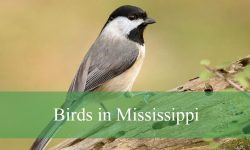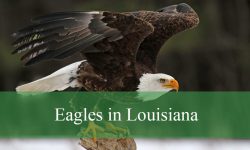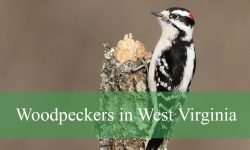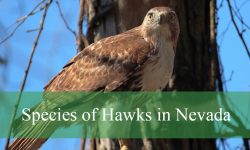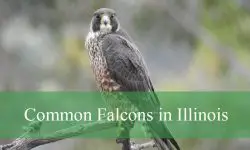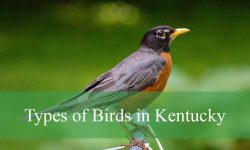Spiders in Wisconsin inhabit a diverse range of habitats, from forests to urban areas. With hundreds of species present, encountering various spiders is not uncommon. Whether you’re exploring nature trails or tending to your garden, it’s essential to be familiar with the spiders you may encounter.
While some, like the orb weavers and jumping spiders, are frequently seen, others, such as the conical trashline orbweaver or the hobo spider, are less commonly observed.
The article below will compile a list of the 45 most common spider species that can be found in Wisconsin, along with their characteristics and identification.
Different Types of Spiders in Wisconsin
Mouse Spider
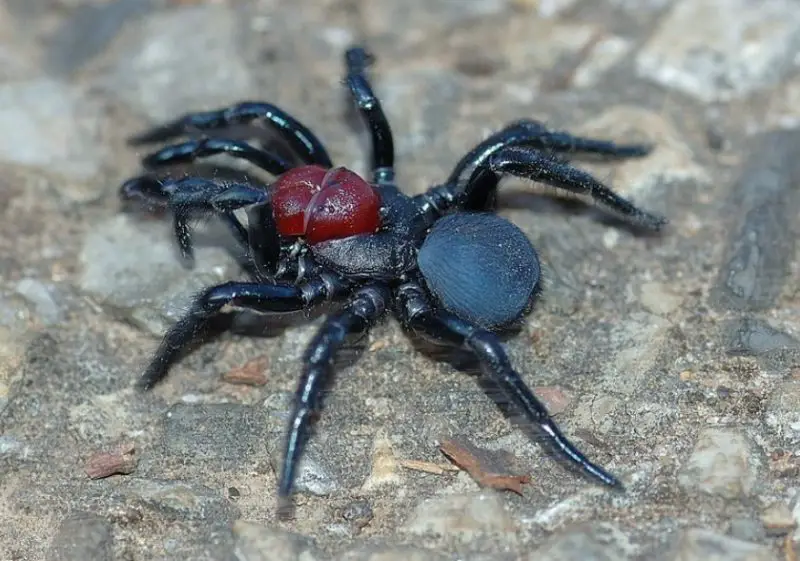
The mouse spider (Scotophaeus blackwalli) from the Gnaphosidae family was introduced to North America from Europe. Found both indoors and outdoors, they hide under bark or in wall holes. Nocturnal hunters: males grow to 9 mm and females to 12 mm. They have a dark brown carapace and a gray-to-brown abdomen, with hair resembling a mouse’s fur. Their brown legs move in a start-stop manner like a mouse. They are not medically significant.
Common House Spider
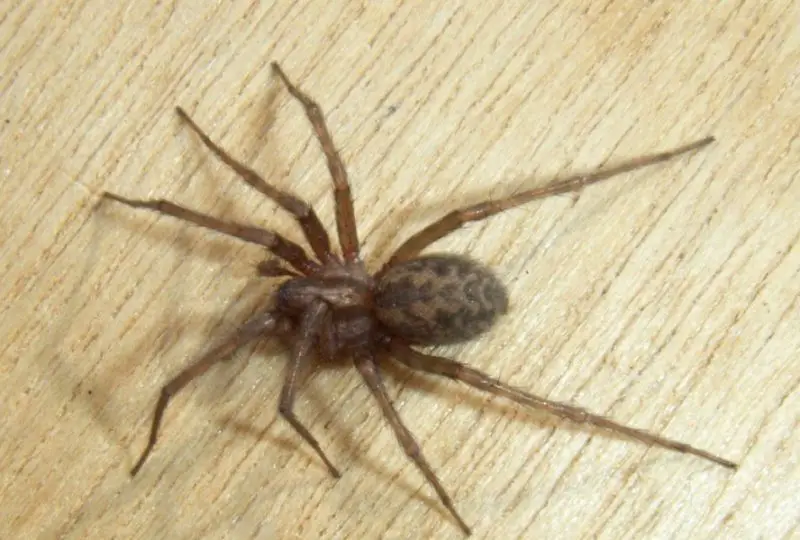
The common house spider (Parasteatoda tepidariorum), also known as the American house spider, creates tangled “Halloween” webs in the corners of windows and attics. Females often build webs close together. These comb-footed spiders have long legs with comb-like hairs on their back ankles. They fling silk strands to capture insects. Brown with white specks and dark lines, they have a bulb-shaped abdomen. They are non-aggressive, sometimes playing dead when threatened, and their bites are not dangerous to humans.
Johnson’s Jumping Spider
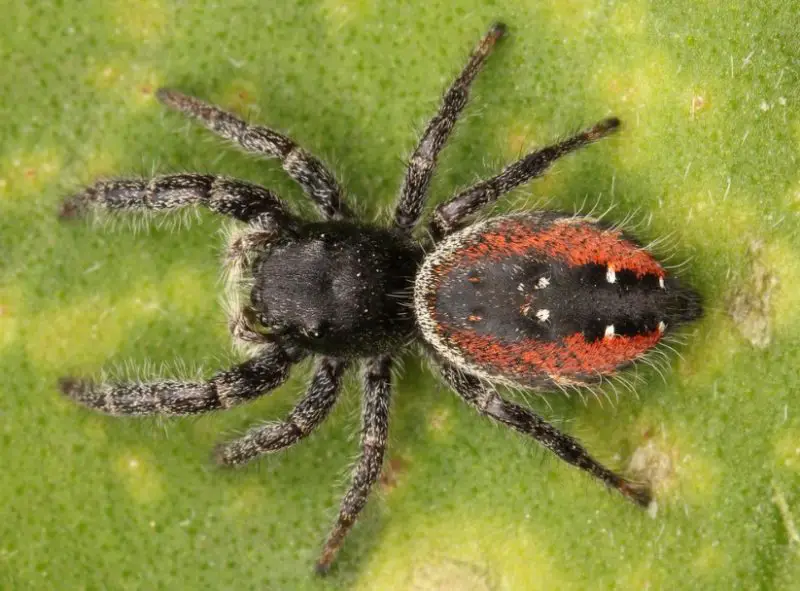
The Johnson’s jumping spider (Phidippus johnsoni), also known as the red-backed jumping spider, is a small spider capable of jumping more than five times its body length. Unlike other spiders, it doesn’t build webs but rather ambushes prey with rapid jumps, injecting venom upon biting. After subduing prey, it carries it back to its retreat web for consumption. Active during the day, its bites can be painful but are not medically dangerous.
Sierra Dome Spider
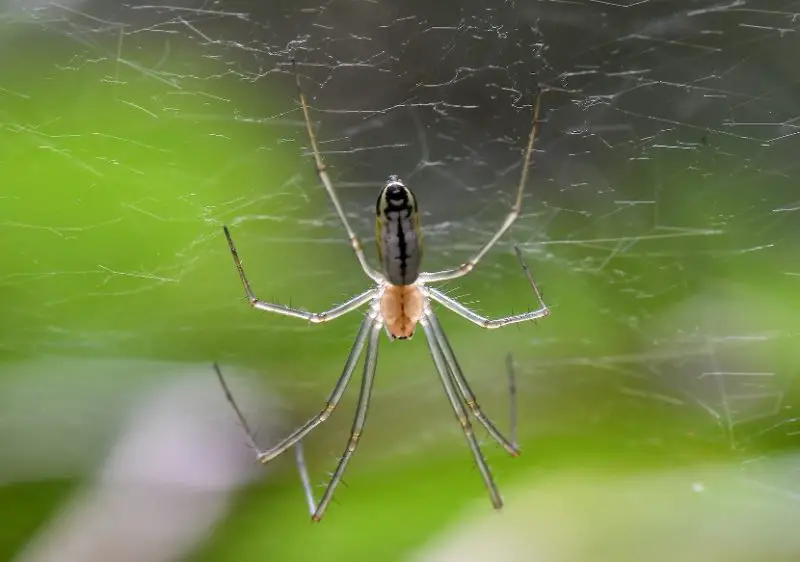
The Sierra dome spider (Neriene litigiosa) constructs dome-shaped webs hanging between bushes and wood edges. Females reside upside-down beneath these domes and often mate with multiple males. While females rarely leave their webs, males actively search for mates, often found on branches or near the webs. Encounters with these spiders typically occur outdoors, where they remain inside their webs.
California Flattened Jumping Spider
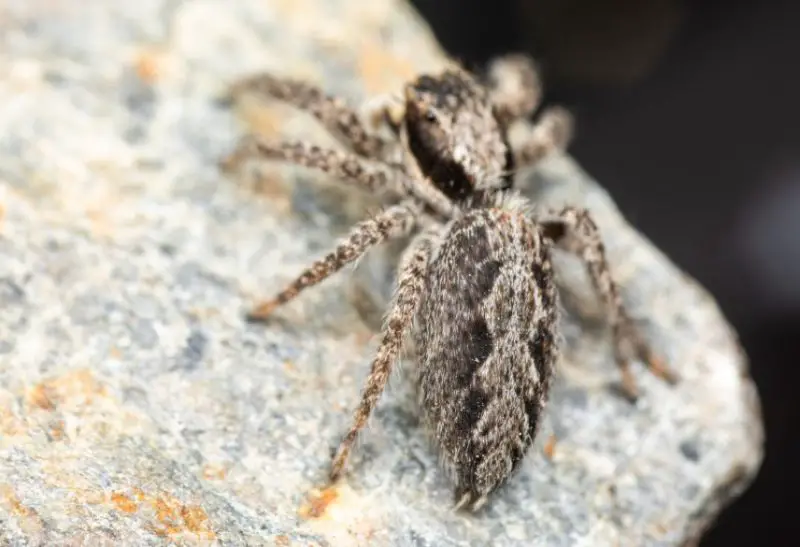
The California flattened jumping spider (Platycryptus californicus) from the Salticidae family is renowned for its ability to leap significant distances despite its small size. These spiders are predominantly black, with brown and white markings on their cephalothorax and mostly white markings on their elongated abdomens, which are covered in fine hair. Their legs display black, brown, and white banding and are also hairy. They use their jumping prowess to ambush prey during the day, retreating to their webs at night.
Eurasian Running Crab Spider
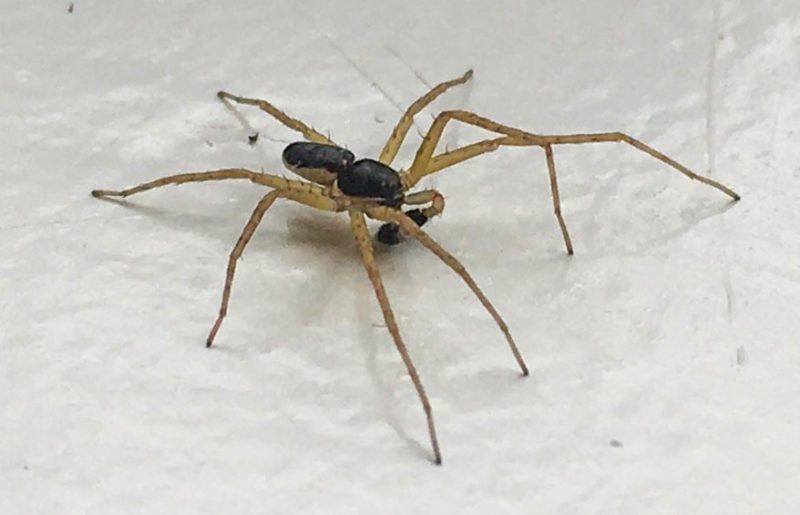
The Eurasian running crab spider (Philodromus dispar) is often found in bushes and trees. Agile hunters, females come in various colors and sizes, while males are shiny black or dark brown with white edging, reaching up to 5 mm in body length. They primarily feed on flies and small insects, employing a cat-like hunting strategy—remaining still until prey approaches, then ambushing it swiftly.
Northern Yellow Sac Spider
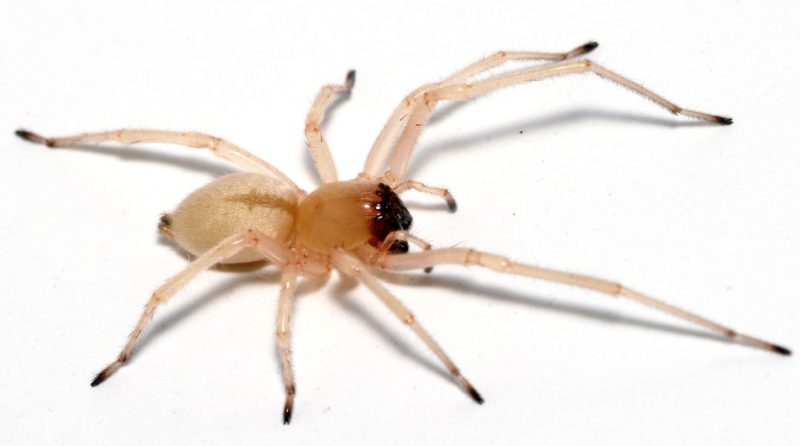
The Northern yellow sac spider (Cheiracanthium mildei) is green or tan with dark brown chelicerae and palpi, growing up to 0.4 inches (10 mm) in body length. Their legs end in a double claw, with the front pair being longer than the others.
Native to North Africa and Europe, they were introduced to the United States and are commonly found both indoors and outdoors. Venomous like all spiders, their bites can cause localized pain, swelling, and ulceration, sometimes requiring medical attention for healing.
Western Black Widow
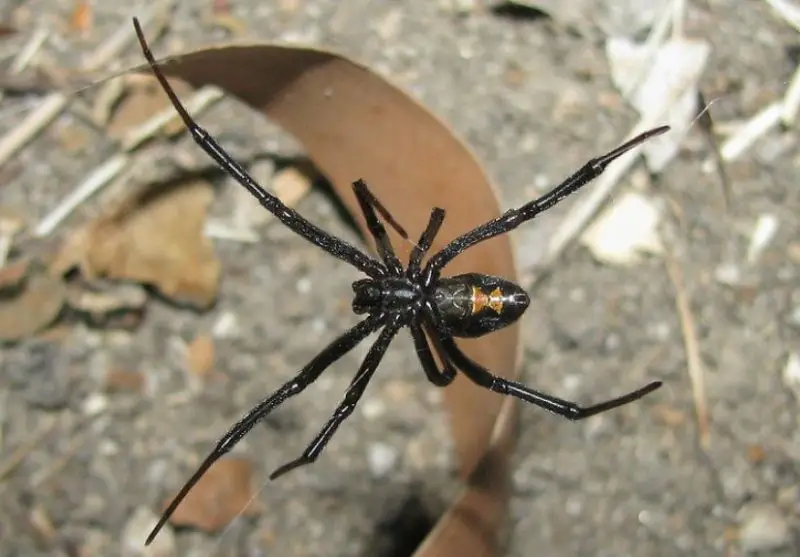
The Western black widow (Latrodectus hesperus) is a venomous spider, with females being the most dangerous at 16 mm in length. They are black with a red hourglass marking on the belly, sometimes white or yellow. Males are tan with abdomen stripes, half the size of females. They weave messy webs. The female’s potent neurotoxin venom can cause symptoms ranging from pain to sweating, but fatalities in North America are rare.
Silver-Sided Sector Spider
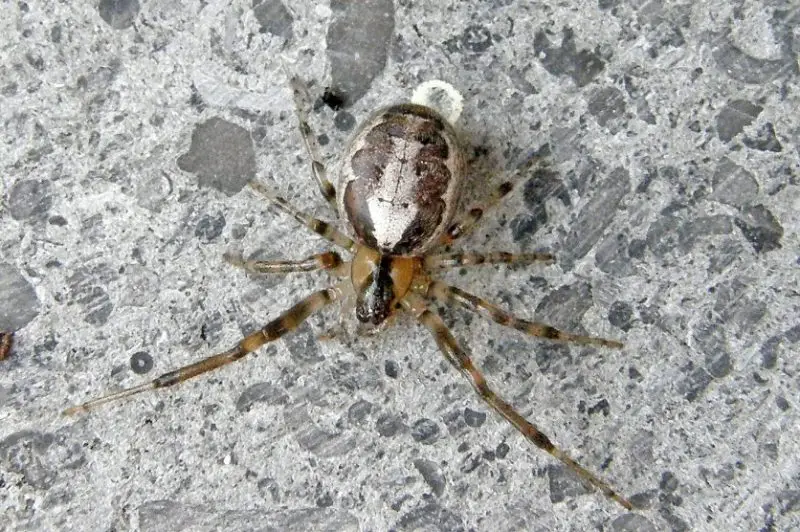
The Silver-Sided Sector Spider (Zygiella x-notata), also known as the missing sector orb weaver, features a silver-sheened abdomen. Females reach 1 mm in body length, while males grow to 7 mm. Females have gray banded legs and dark gray waves on their undersides, while males have dark undersides, brown cephalothoraxes, legs, and smaller cream abdomens. They are prevalent from July to October.
Grass Spiders
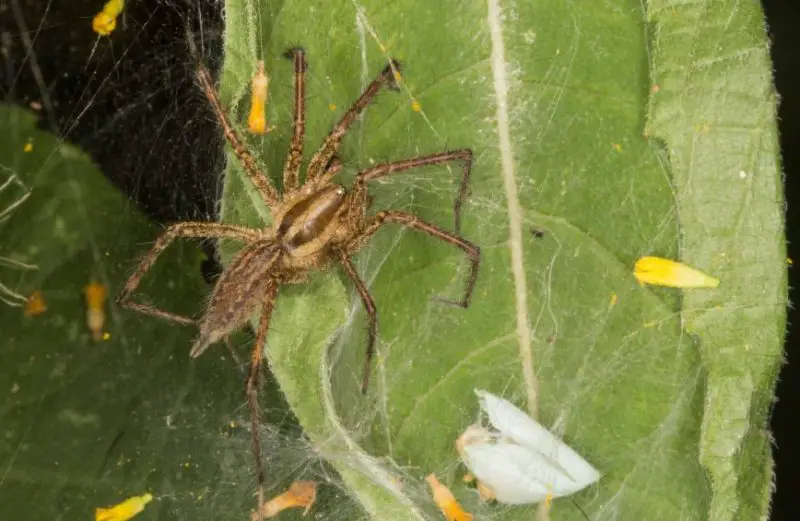
The grass spider, also known as the American grass spider, belongs to the funnel weaver family, recognized for its sheet webs with a funnel shelter. Unlike sticky webs, these allow the spider to capture insects with speed. Growing up to 19 mm, they have eight eyes in three rows and distinct leg banding, with two dark bands flanking their cephalothorax.
Banded Garden Spider
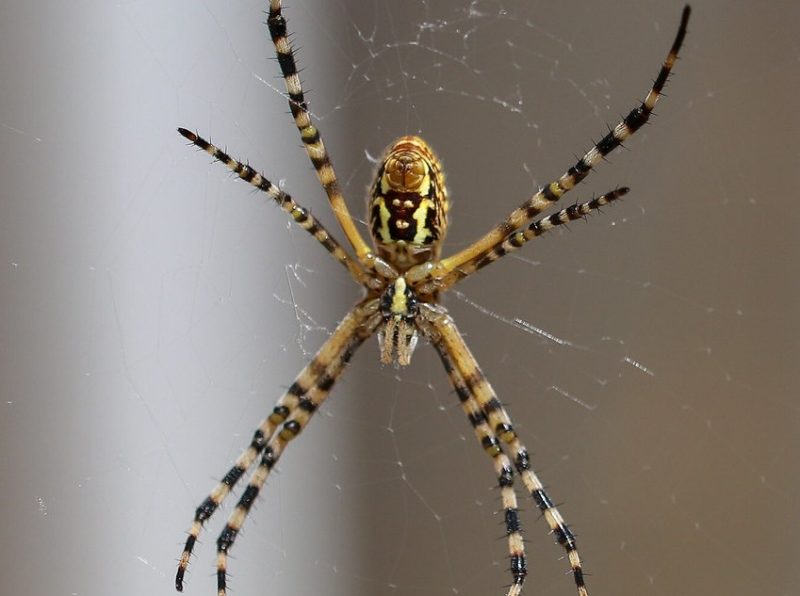
The banded garden spider (Argiope trifasciata), also known as the banded orb weaving spider, constructs circular webs up to two feet in diameter, with some larger adults weaving webs up to two meters. Females sit upside down in the web’s center, arranged in pairs to form a cross shape, while males, smaller in size, build smaller webs nearby. They capture prey larger than themselves by biting and injecting venom before wrapping them in silk.
Woodlouse Spider
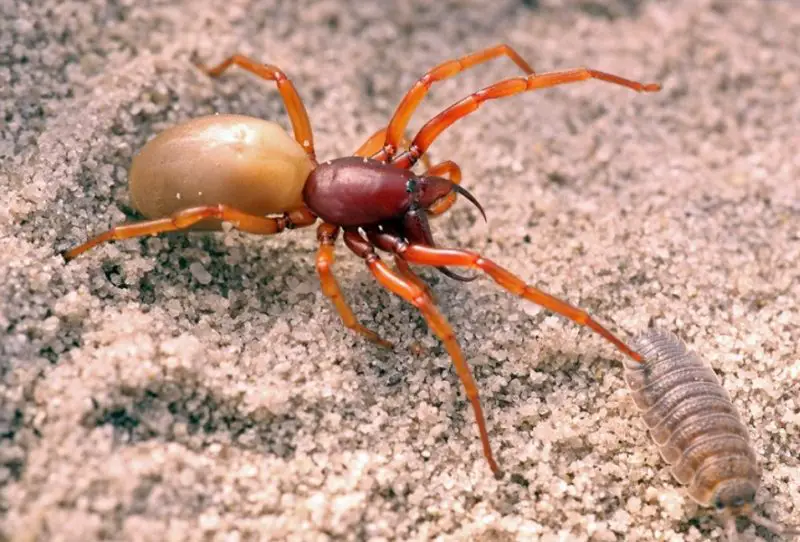
The woodlouse spider (Dysdera crocata), also known as the woodlouse hunter or sowbug killer, features females reaching 15 mm in body length, with males smaller at around 10 mm. Sporting orange or dark red legs and a cephalothorax, they have a shiny yellow/brown to beige abdomen. Commonly found around homes, they hide under rocks, logs, and leaf litter, preying on woodlice. They retreat to their silk shelters during the day and hunt at night, spinning webs for shelter and prey consumption.
Bronze Jumping Spider
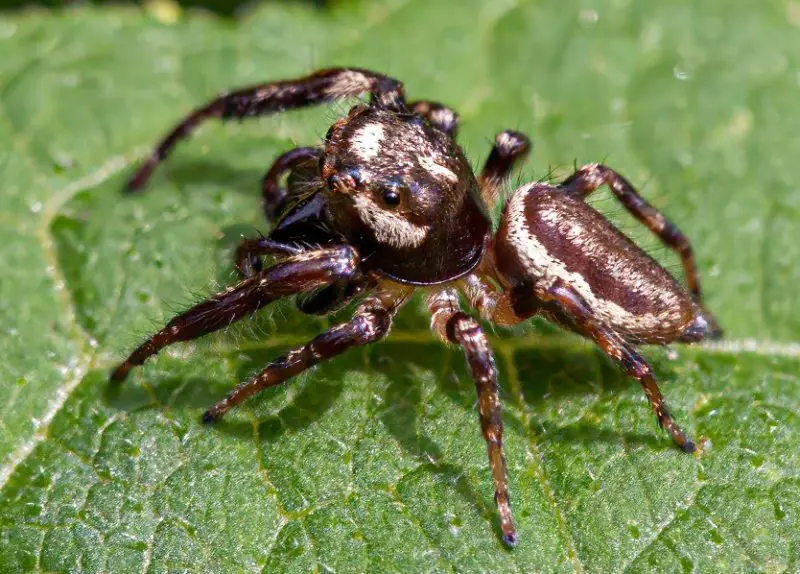
The bronze jumping spider (Eris militaris), also known as the bronze jumper or bronze lake jumper, is prevalent in Wisconsin. Males sport dark cephalothoraxes with white banding on the sides and lighter abdomens with white bands. Females exhibit lighter cephalothoraxes and darker abdomens without white bands. Females reach 8 mm, while males grow to 6.7 mm.
Common in homes, fields, and woods, their bronze-brown coloration aids in camouflage. They may bite if provoked, but typically prefer to flee when feeling threatened.
Grey Cross Spider
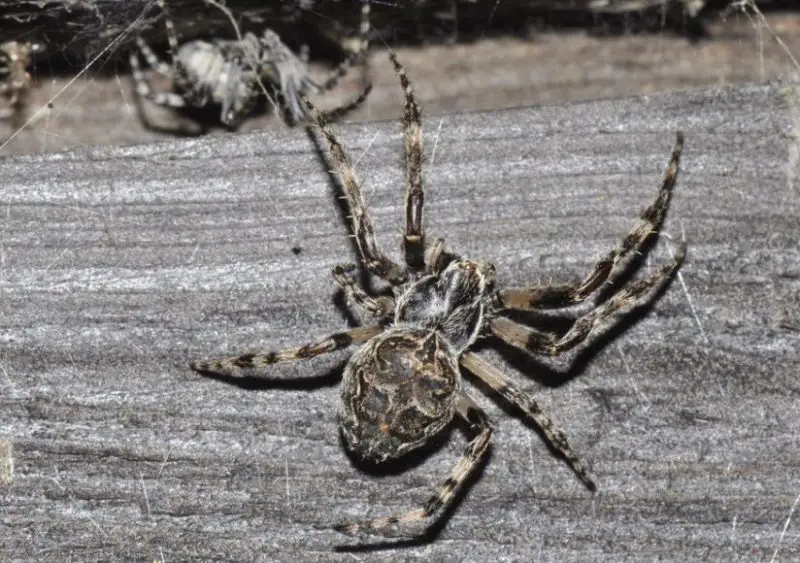
The gray cross spider (Larinioides sclopetarius), also known as the bridge spider, exhibits sexual dimorphism, with females heavier but males longer in body length. Females weigh up to 60 mg and grow to 6.25 mm, while males weigh up to 38 mg and reach 7 mm. They feature dark markings on their abdomens and white-haired heads.
Typically found near artificial lights that attract insects, females seek illuminated areas for web-building and egg-laying. Larger females occupy prime foraging spots, leaving juveniles with inferior feeding areas.
Pacific Folding Door Spider
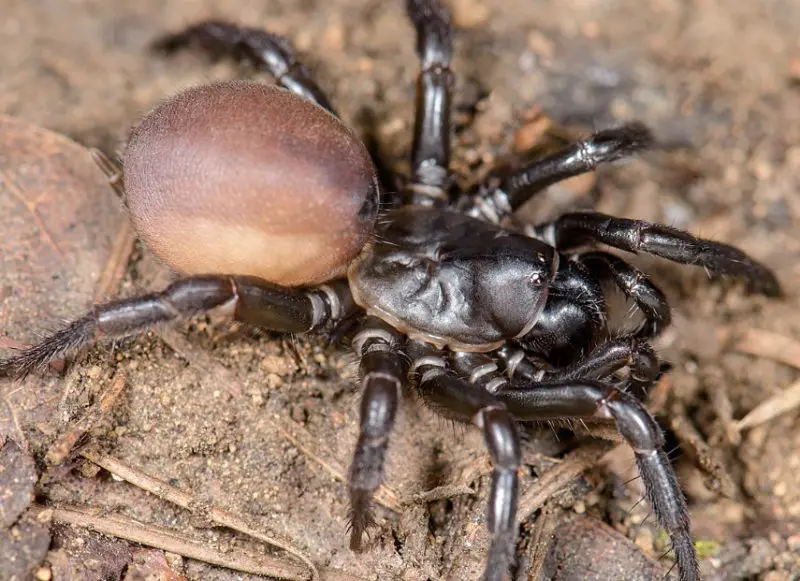
The Pacific folding door spider (Antrodiaetus pacificus), a Mygalomorph species, was first described in 1884. With a dark brown to black carapace and three abdominal patches, females can reach 13 mm, while males are smaller at around 11 mm. They inhabit cool, damp forests, burrowing in sand, moss, and decaying wood. During the day, they keep their burrow entrances closed, emerging at night to prey on beetles and other insects.
Nordmann’s Orbweaver
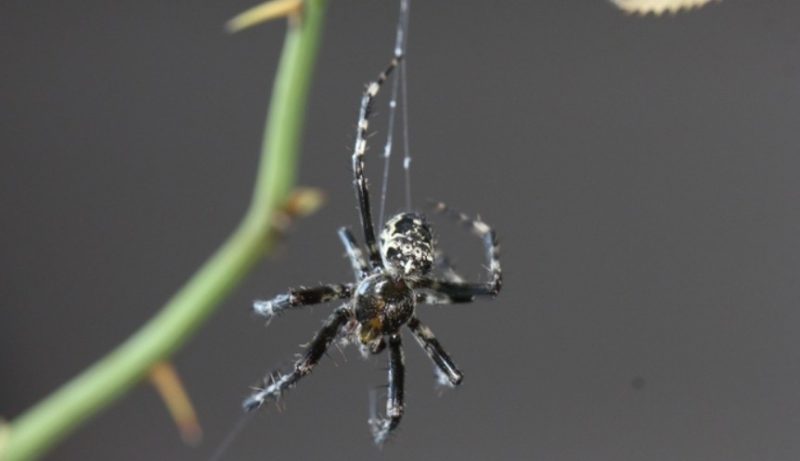
Nordmann’s orbweaver (Araneus nordmanni), a member of the Araneidae family, is an orb-weaving spider capable of spinning large circular webs, often reaching two feet in diameter. The female typically hangs upside down at the center of her web, awaiting prey. These webs are commonly found in backyards, gardens, forests, grasslands, and meadows, where they efficiently capture insects for the spider’s sustenance.
Hobo Spider

The hobo spider (Eratigena agrestis) is a funnel-web spider, spinning funnel-shaped webs where they wait for prey. Found both indoors and outdoors around human homes, they can reach 14 mm in body length. Brown in color, they feature a chevron pattern on their abdomen pointing toward the head and a light stripe down the center of the sternum. These identifying features help distinguish them from other spiders in their habitat.
Cat-Faced Orbweaver
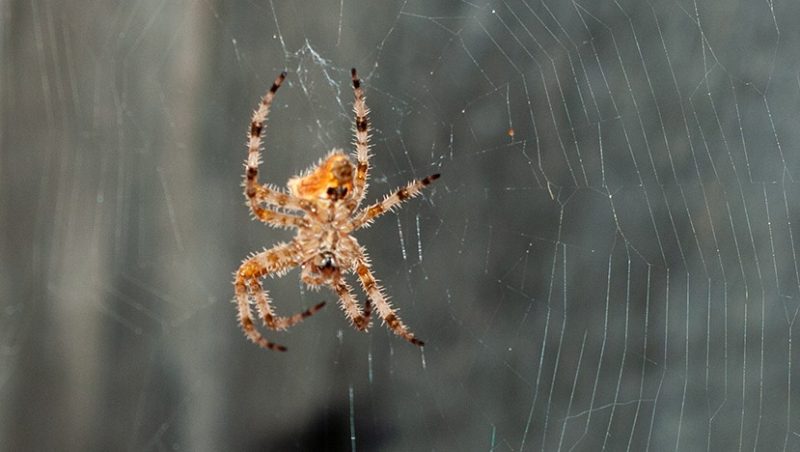
The cat-faced spider (Araneus gemmoides), also called the jewel spider, is a harmless outdoor spider commonly found near artificial light sources or in closed spaces on building sides. They inhabit wooded areas and overhangs. These spiders vary in color and feature two horn-shaped protrusions on their abdomen. Their color changes from winter to summer, adding to their distinct appearance. Despite their intimidating name, they pose no threat to humans.
Western Spotted Orbweaver
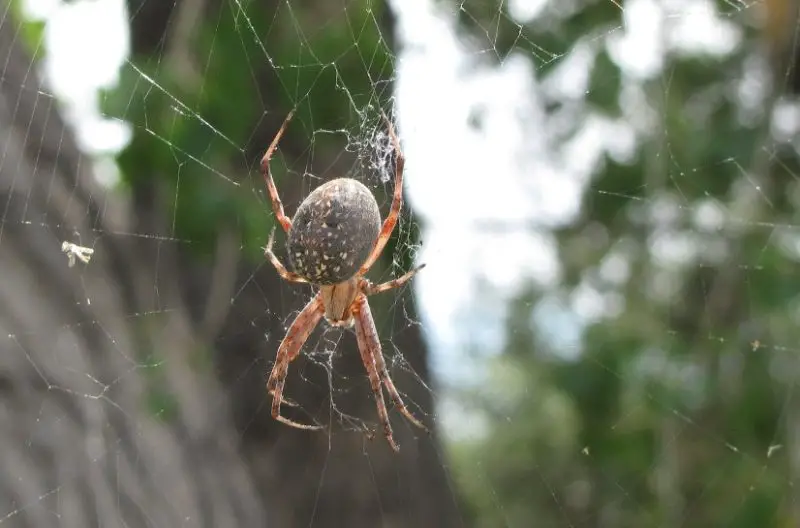
The Western spotted orbweaver (Neoscona oaxacensis), also known as the zig-zag spider, is sizable, with females reaching 18 mm and males 13 mm in body length. Their distinctive feature is the black and white pattern on their abdomen. They inhabit various environments, from yards and parks to wooded areas with low vegetation.
When disturbed, they vibrate in their webs, resembling the behavior of long-bodied cellar spiders. Harmless to humans, they typically drop from the center of their webs and hide until the perceived threat subsides.
Conical Trashline Orbweaver
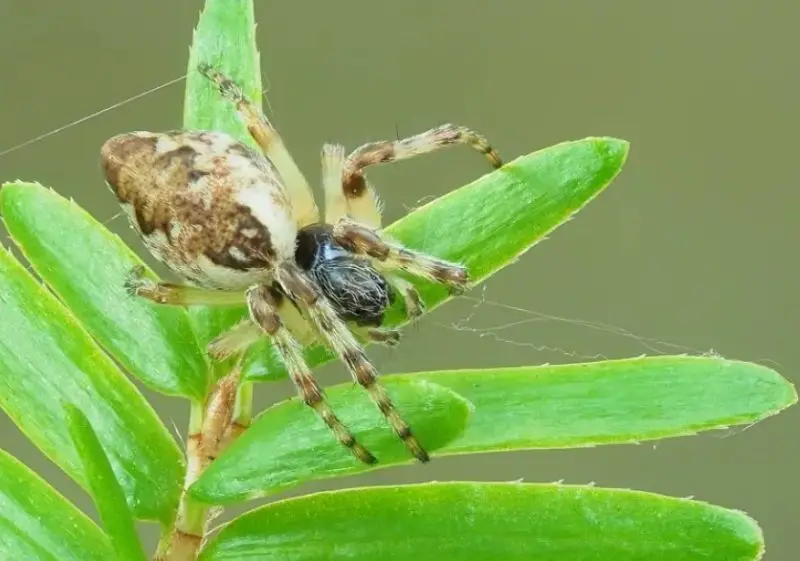
The Conical Trashline Orbweaver (Cyclosa conica) is known for its conspicuous webs adorned with debris, camouflaging the tiny spider within. They craft small circular webs and decorate them with the husks of consumed insects. The spider sits upside down at the center of the web. Their colors vary from gray to brown, with some specimens featuring tan, white, yellow, black, or rust-red markings, aiding in their camouflage amidst the debris-laden web.
Brilliant Jumping Spider
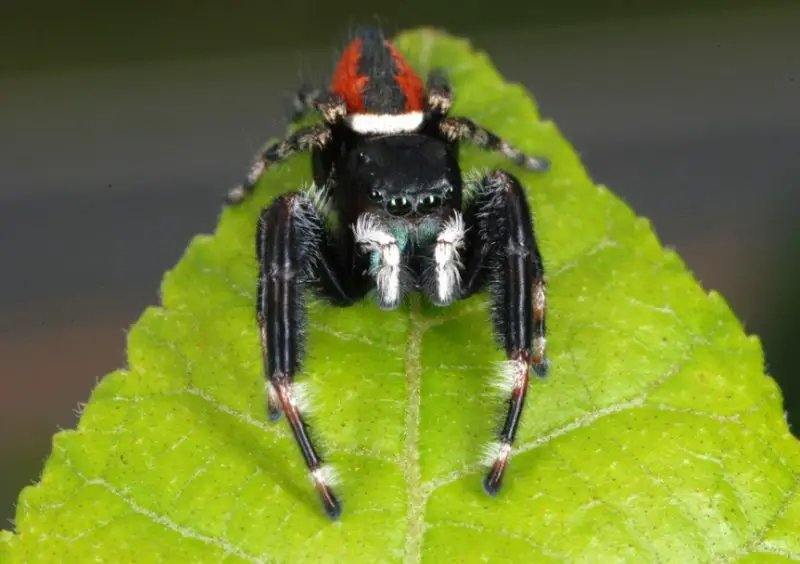
The Brilliant Jumping Spider (Phidippus clarus) possesses exceptional vision, crucial for prey detection. With remarkable jumping abilities, they capture prey and evade predators swiftly. Typically inhabiting old fields, they reside in flowers, sharing space with medium-sized crab spiders. These spiders perch atop plants upside-down, awaiting prey below. Upon detection, they swiftly leap down to capture their meal. Their agility and hunting prowess make them adept predators in their habitat.
Triangulate Combfoot
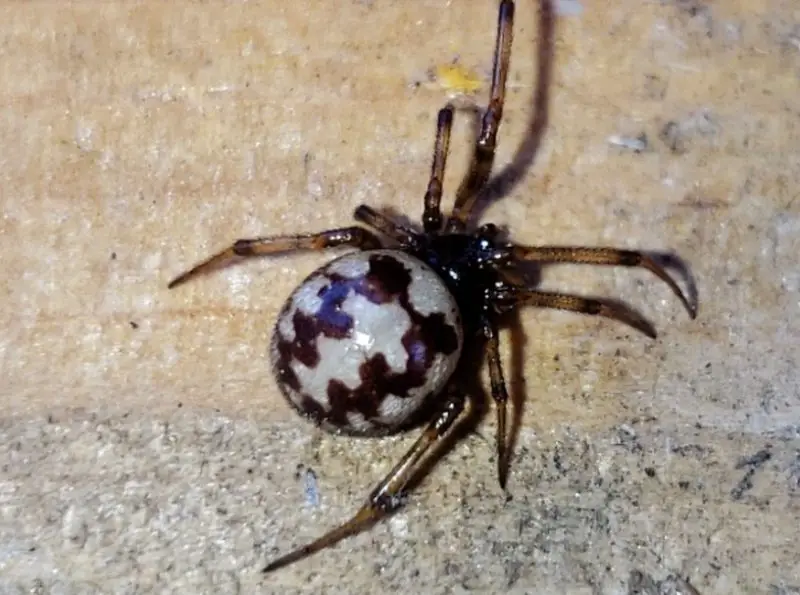
The Triangulate Cobweb Spider (Steatoda triangulosa), also known as the triangulate bud spider, is characterized by a triangular pattern on its abdomen. Often found in dark corners of rooms and outbuildings, it relies on vibrations to detect ensnared prey in its web. Feeding on various insects and spiders, it poses no threat to humans, being non-aggressive. These spiders reconstruct their webs daily, spending nights awaiting trapped insects.
Broad-Faced Sac Spider
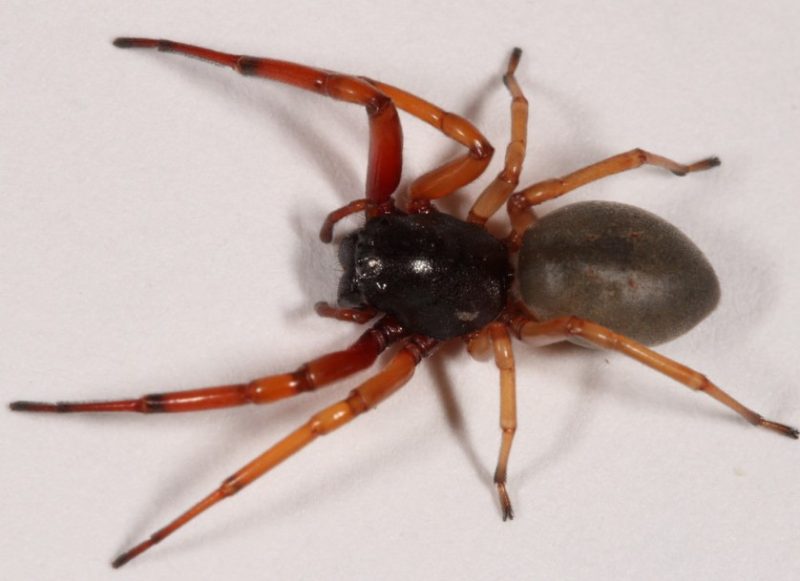
The Broad-faced Sac Spider (Trachelas tranquillus) is solid-colored, featuring a shiny dark brown or red cephalothorax and a tan or gray abdomen with a dull sheen. Their legs are tan-brown or red, with the front pair darker. Females grow larger, reaching 10 mm in body length and boasting a leg span of 16 mm. These spiders are commonly found in various habitats, including homes, where they hunt for prey and contribute to pest control.
Dimorphic Jumping Spider
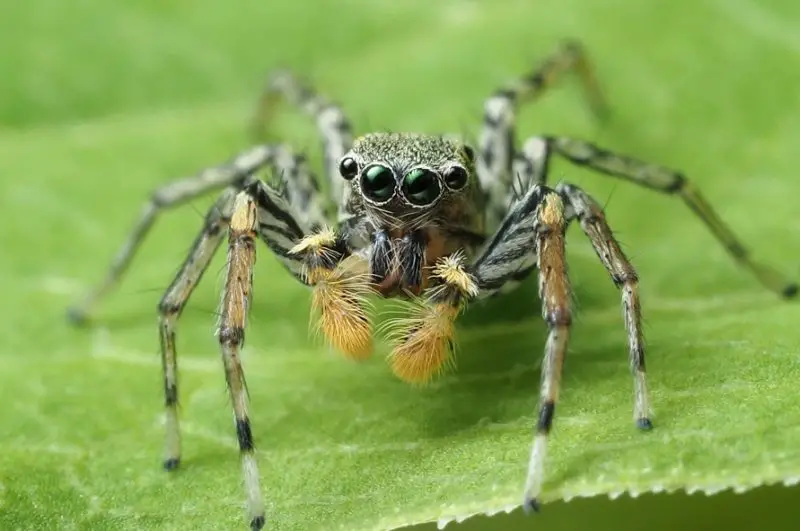
The Dimorphic Jumping Spider (Maevia inclemens) exhibits two distinct forms. Males may be black with yellow legs or tan with red markings on the abdomen, while females resemble paler versions of the tan male, with short hairs covering their bodies. Agile hunters can leap considerable distances at high speeds to ambush prey and evade threats. Though small, they may bite if provoked or threatened.
Cross Orbweaver
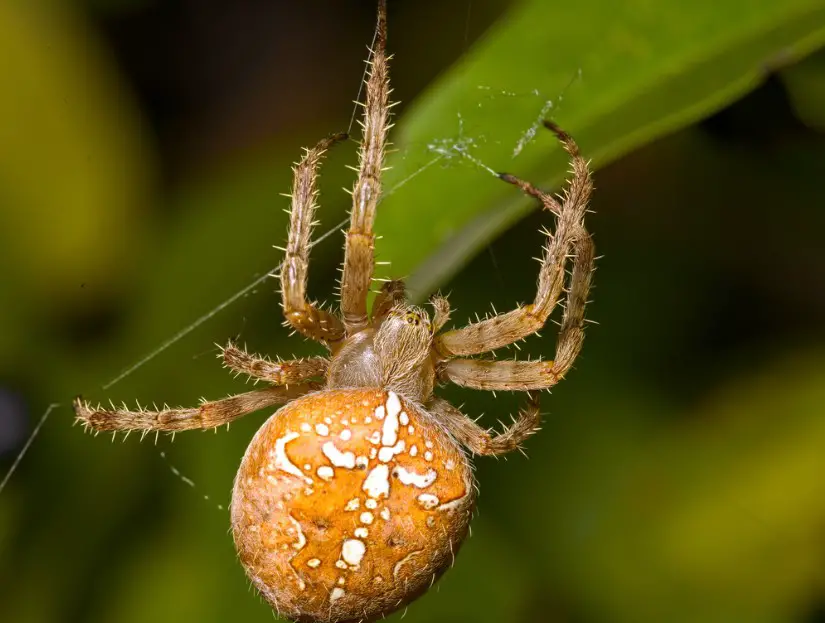
The cross orbweaver (Araneus diadematus), also known as the European garden spider or pumpkin spider, is native to Europe and has spread to North America. Its dark brown abdomen features a distinctive white cross marking. Females are twice the size of males. They have brown and tan-banded legs with white hairs. This spider often sits upside down in its web and drops to the ground when startled, inhabiting various environments like woodlands and gardens.
Giant House Spider
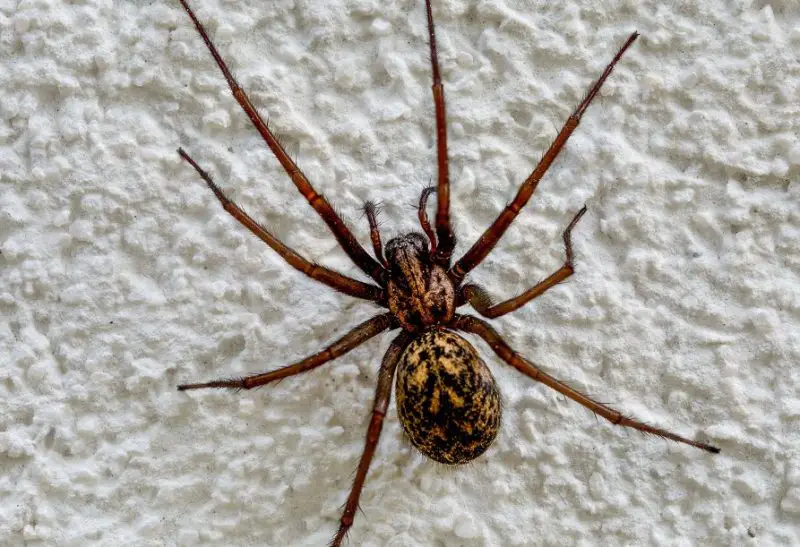
The giant house spider (Eratigena duellica) is dark brown with light markings on the sternum and three spots forming an arrow towards its head. Females can reach 0.73 inches in body length, while males grow to 0.59 inches. Their leg span can be up to 2.95 inches. They have hairy palps, abdomen, and legs, and their eight eyes are arranged in two rows. Their webs are messy and flat with a funnel, commonly found in basements and behind furniture.
Zebra Jumping Spider
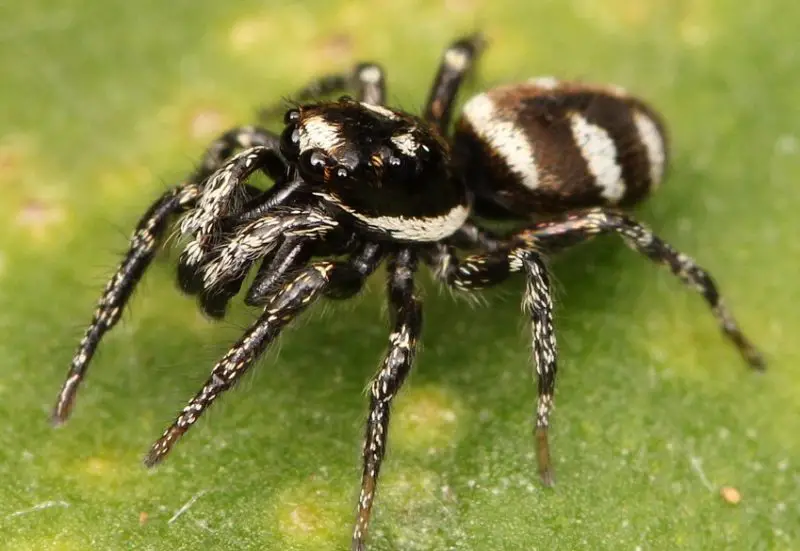
The zebra jumping spider (Salticus scenicus) can grow up to 8 mm in body length. These small spiders, identifiable by their black and white markings, are commonly seen from spring to fall, often hunting on outside walls and occasionally indoors. They are diurnal ambush hunters with excellent vision, pouncing on small insects. Their webs are used to store eggs or create a safe retreat for eating captured prey.
Goldenrod Crab Spider

The goldenrod crab spider (Misumena vatia), also known as the flower crab spider, hunts in goldenrod sprays and milkweed plants. Females can grow up to 0.39 inches, while males reach 0.20 inches. Their color varies from white to yellow, sometimes featuring both. These spiders can change color during molting based on their environment. They prey on insects, including those larger than themselves. Females stay on one flower, while males wander in search of mates.
Bold Jumping Spider
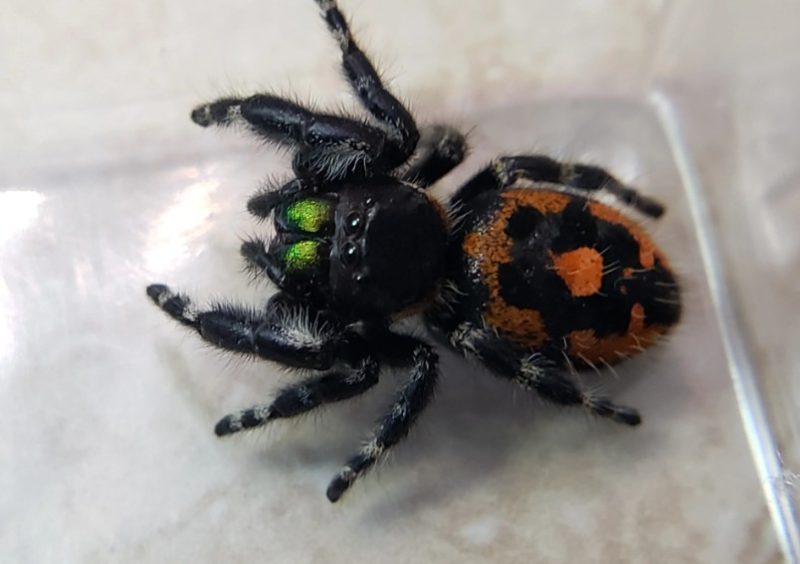
The bold jumping spider (Phidippus audax), also known as the daring jumping spider, belongs to the Salticidae family. These small spiders are known for their ability to jump long distances to ambush prey and evade predators. They have bold black coloration with a white line on the upper abdomen and two white dots near the rear. Active during the day, they inhabit various environments, from homes and offices to cars. Their bite causes a stinging sensation, but it is not dangerous to humans.
False Black Widow
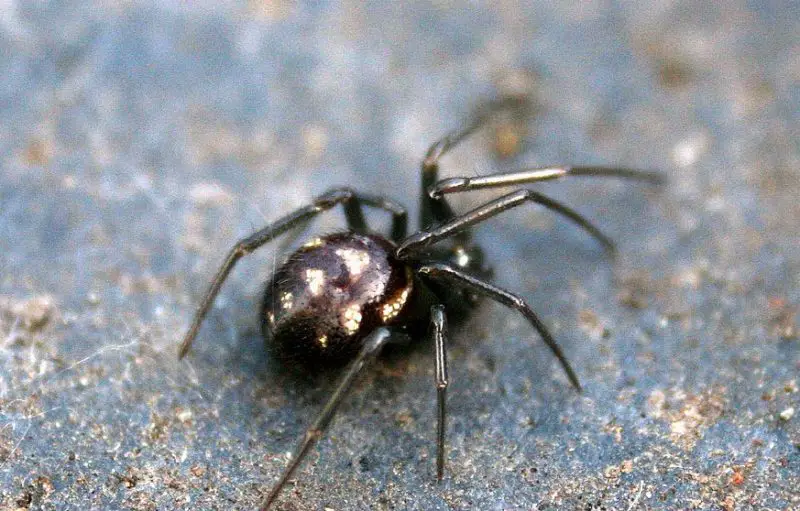
The false black widow (Steatoda grossa), also known as the cupboard spider, has females that can grow up to 10.5 mm with a dark, bulb-shaped abdomen. Their color varies from purple-brown to black with lighter markings, lacking the bright hourglass marking. Males are slender and similarly colored. They create tangled cobwebs and have poor eyesight, relying on web vibrations to locate prey. Not aggressive, their bites can cause blistering, pain, fever, muscle spasms, and sweating, lasting several days.
Common Candy-Striped Spider
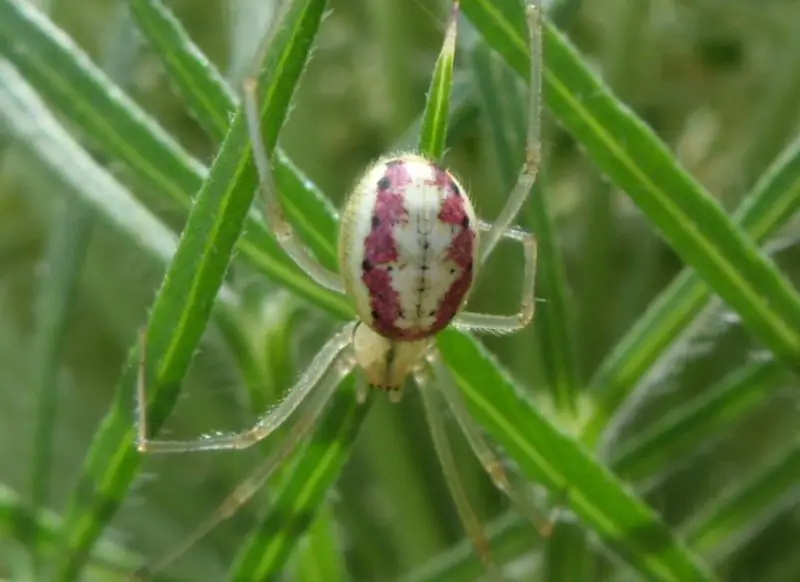
The common candy-striped spider (Enoplognatha ovata) belongs to the Theridiidae family and is native to Europe but found in North America. It can grow up to 6 mm in leg span, with translucent legs and a bulb-shaped abdomen. The abdomen’s color varies from white, green, or cream with dark spots and may feature a broad red stripe or two red stripes forming a V shape. They are excellent predators, often preying on insects larger than themselves, and are commonly found in gardens, grasslands, and hedgerows.
Long-Bodied Cellar Spider
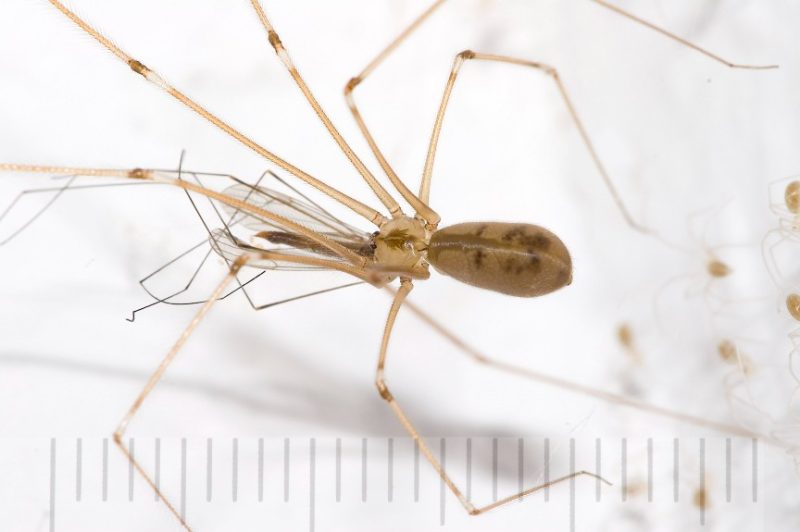
The long-bodied cellar spider (Pholcus phalangioides), also known as the daddy long-legs spider or skull spider, has an elongated, tubular-shaped abdomen and long, spindly legs. Nearly blind, it hangs upside down in its web, waiting for insects to get entangled. Despite having exceptionally small mouthparts and being unable to bite humans, it bounces in its web to appear blurred to predators and possibly to help prey get caught.
Filmy Dome Spider
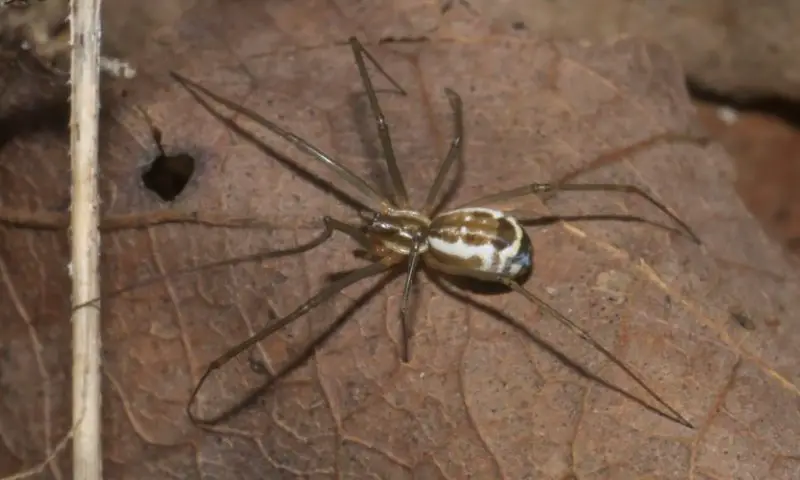
The Filmy Dome Spider (Neriene radiata) is a sheet weaver, known for its unique dome-shaped webs woven with superfine silk. These nocturnal spiders hide in leaf litter during the day. Their coloration varies, with some displaying black or brown bodies with white or yellow stripes on the abdomen’s sides, while others are black and white or two-toned. Males are smaller with elongated abdomens, while females have bulb-shaped abdomens. Typically found in wooded areas, they dwell close to the ground.
White-Jawed Jumping Spider
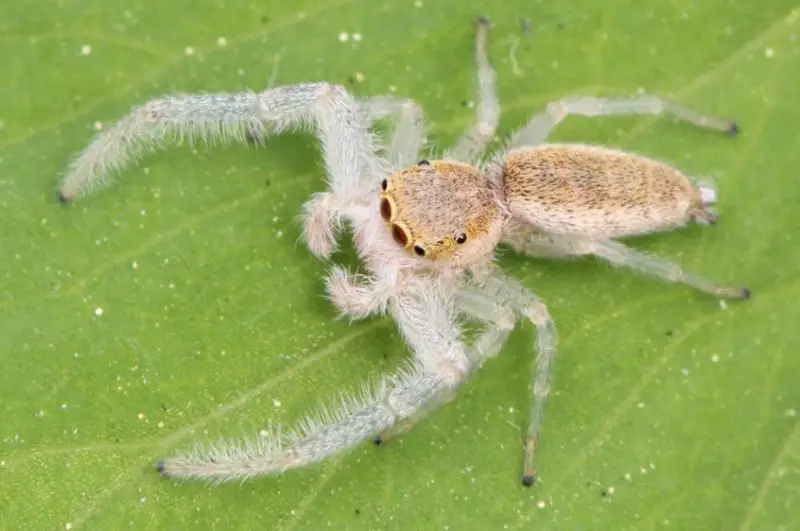
The White-jawed Jumping Spider (Hentzia mitrata) is a diminutive species, typically reaching only 3 mm in body length, often overlooked due to its small size. Named for the crown of red hairs resembling a headdress (mitrata in Latin) on their cephalothorax, they sport a coppery coloration.
These adept ambush predators rely on their excellent jumping skills to hunt prey, wandering between locations in search of food. Their webs are primarily used for molting and egg-laying. Despite their large front eyes, they pose no danger to humans, delivering a bite akin to a bee sting that heals quickly.
Common White-Cheeked Jumping Spider
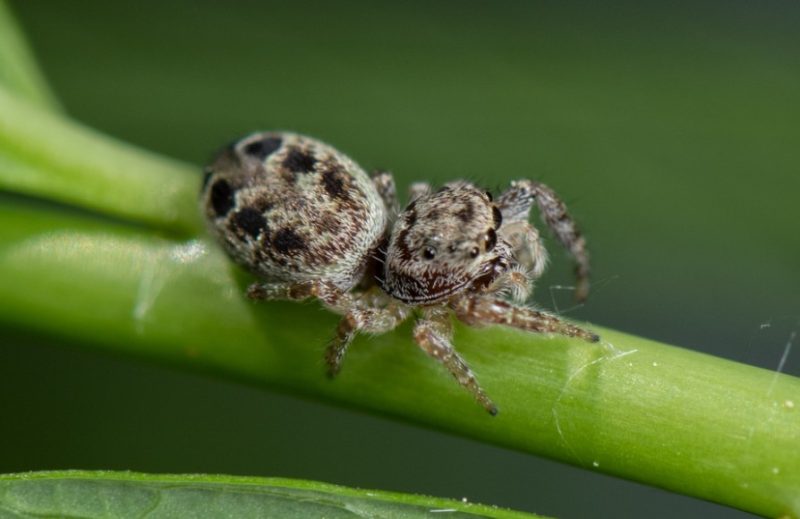
The Common White-Cheeked Jumping Spider (Pelegrina proterva), belonging to the Salticidae family, reaches up to 5.6 mm in females and 4.2 mm in males. Harmless and agile, they can leap over four times their body length, aiding in ambushing prey and evading predators. Their webs serve as retreats rather than traps. When hunting, they use a single strand of silk to ensnare prey, which is then dragged back to their retreat for consumption at leisure.
Tuft-Legged Orbweaver
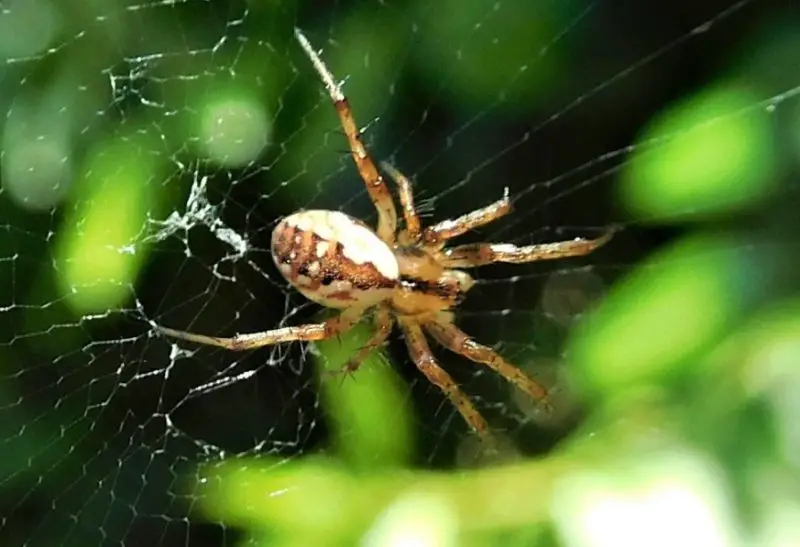
The Tuft-legged Orbweaver (Mangora placida) crafts a distinct fine mesh web, distinguishing it from other orbweavers. Characterized by a tighter construction with fewer gaps, their vertical webs ensnare both large and small insects effectively. With long hairs adorning their legs, they navigate their webs without causing damage. Mottled brown in color, they seamlessly blend into wooded areas, forest undergrowth, tall grass, meadows, fields, and shrubs, where they commonly reside.
Six-Spotted Orbweaver
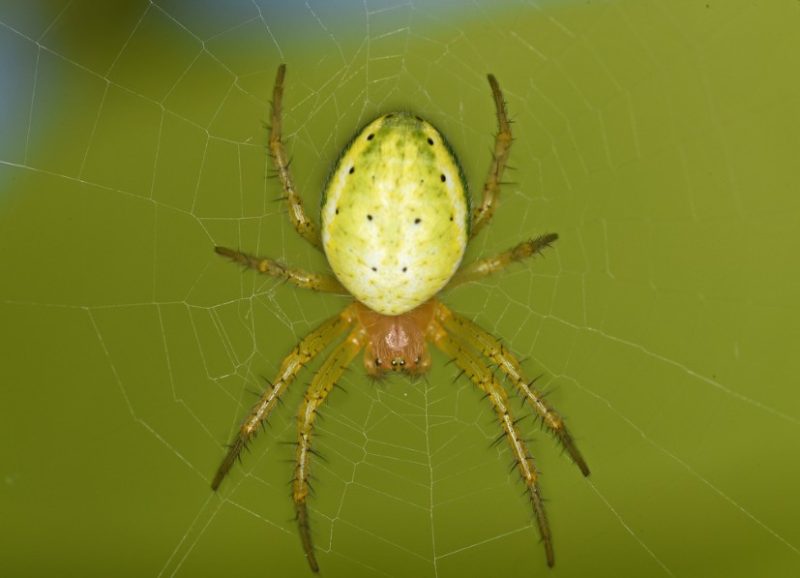
The Six-spotted Orb Weaver (Araniella displicata) is a member of the orb weaver family, recognized for its orb-shaped webs, which can span up to two feet in diameter. Remaking their webs daily, females hang upside down at night, awaiting prey. Males typically stay nearby, often perched on branches or leaves near the female’s web during mating. While not aggressive, they can deliver a painful but medically insignificant bite if provoked, which is manageable with home remedies.
Six-Spotted Fishing Spider
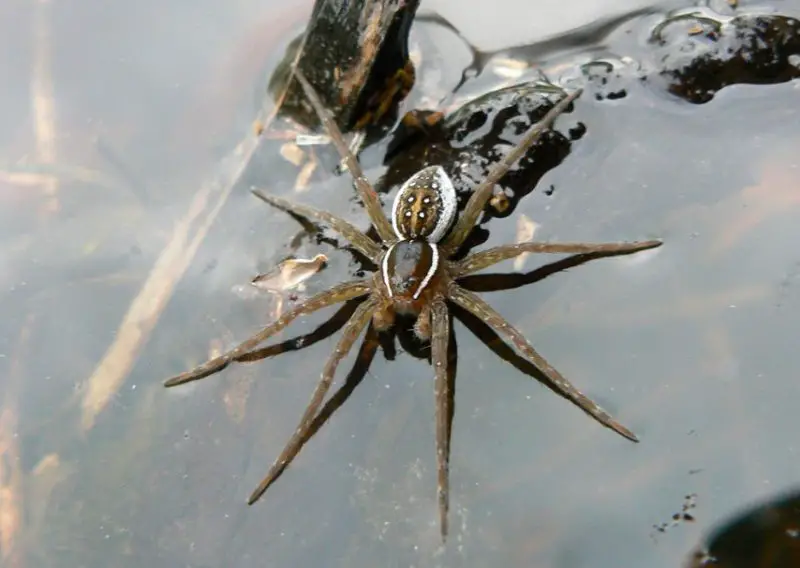
The Six-spotted Fishing Spider (Dolomedes triton), also known as the dock spider, is a large arachnid notable for its distinct markings. With eight eyes providing excellent vision, they feature a gray to brown body adorned with white to pale cream stripes along the cephalothorax. Light-colored spots and lines decorate the abdomen, while six dark spots mark the underside. Females, larger than males, reach 20 mm in body length and a 60 mm leg span, while males measure only 13 mm. Typically found in wetland habitats, they inhabit areas between rocks, vegetation, and boat docks.

